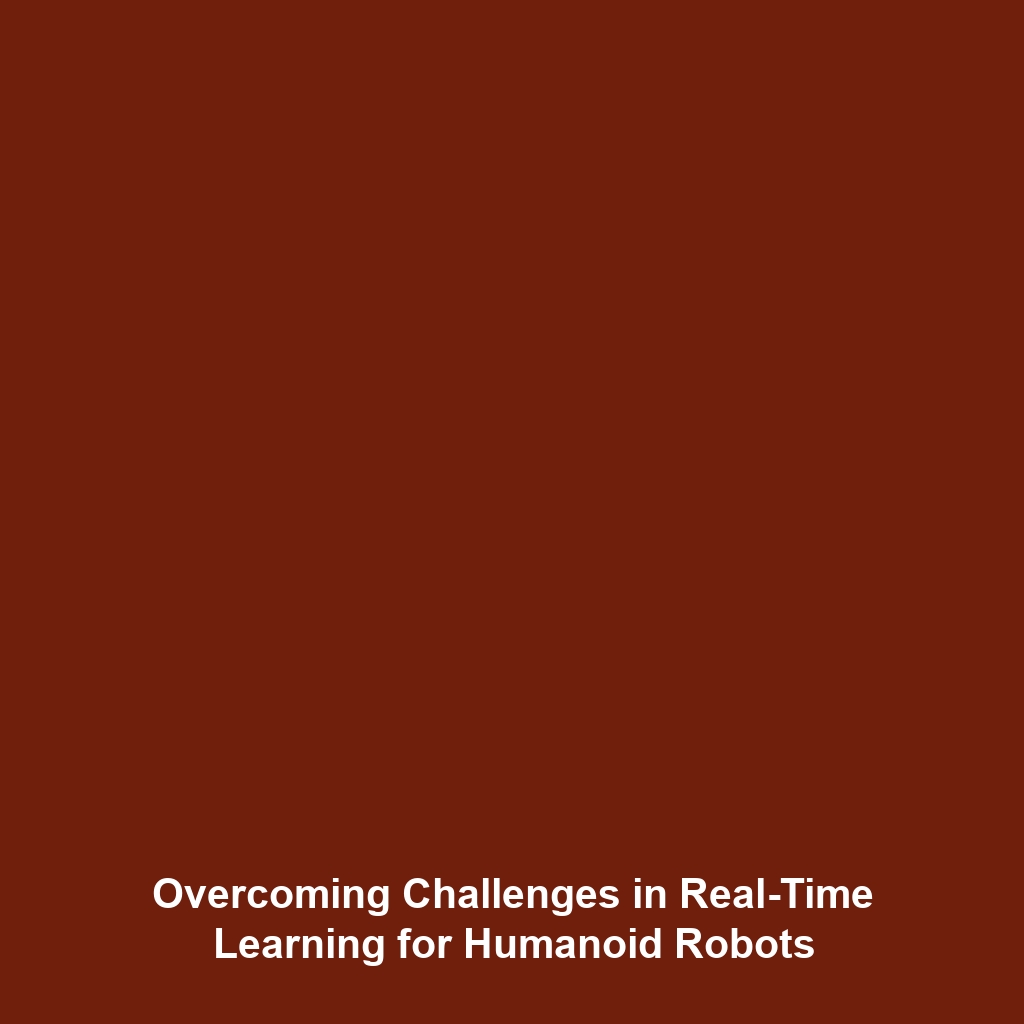Challenges in Real-Time Learning and Adaptation in Humanoid Robots
Introduction
As technology advances, the field of humanoid robots has emerged as a fascinating area of research, particularly in the realm of real-time learning and adaptation. These capabilities are essential for humanoid robots to interact effectively with their environments and perform tasks autonomously. The significance of overcoming these challenges lies not only in enhancing the functionality of humanoid robots but also in paving the way for their widespread adoption in various sectors such as healthcare, education, and service industries. In this article, we delve into the challenges faced by humanoid robots in achieving real-time learning and adaptation, the implications of these challenges, and the future of this technology.
Key Concepts
Understanding the complexities of real-time learning and adaptation in humanoid robots involves several key concepts:
Machine Learning and Artificial Intelligence
At the heart of humanoid robots’ adaptation capabilities lies machine learning and artificial intelligence (AI). These technologies enable robots to process data, optimize their actions, and improve performance based on experiences.
Sensor Integration
Effective sensor integration is crucial for real-time feedback. Humanoid robots rely on sensors to perceive their surroundings, which facilitate learning from interactions and environment changes.
Real-Time Processing
To adapt successfully, humanoid robots must engage in real-time processing of information. This involves quick decision-making and execution based on data gathered through sensors, which can be challenging due to computational limitations.
Applications and Real-World Uses
The challenges of real-time learning and adaptation in humanoid robots have significant implications for their practical applications. Here are some notable examples:
- Healthcare: Humanoid robots can assist in patient care by learning individual patient needs and adapting their support accordingly.
- Education: In educational environments, humanoid robots can serve as personalized tutors, adjusting their teaching methods based on students’ learning paces.
- Service Industry: Robots equipped for customer service can learn to interact with diverse customers and adapt their responses based on feedback.
Current Challenges
Despite advancements, several challenges remain significant in the study and application of real-time learning and adaptation in humanoid robots:
- Integration of complex algorithms for effective learning.
- Limitations in processing speed that hinder real-time adaptability.
- Variability in environmental factors that complicate consistent performance.
- Safety and ethical concerns related to autonomous decision-making in sensitive environments.
Future Research and Innovations
The future of research in real-time learning and adaptation in humanoid robots is promising, with several innovative directions being explored:
- Development of advanced algorithms that enhance machine learning capabilities in dynamic environments.
- Improvements in hardware that allow for faster data processing and real-time interactions.
- Incorporation of reinforcement learning to enable humanoid robots to learn through trial and error in a more effective manner.
Conclusion
In summary, the challenges in real-time learning and adaptation are pivotal areas of focus in the development of humanoid robots. Addressing these challenges will greatly enhance the capabilities and applications of these systems, facilitating their integration into daily life. For further reading on the implications of AI in robotics, visit our articles on AI in Robots and The Future of Humanoid Robots.

